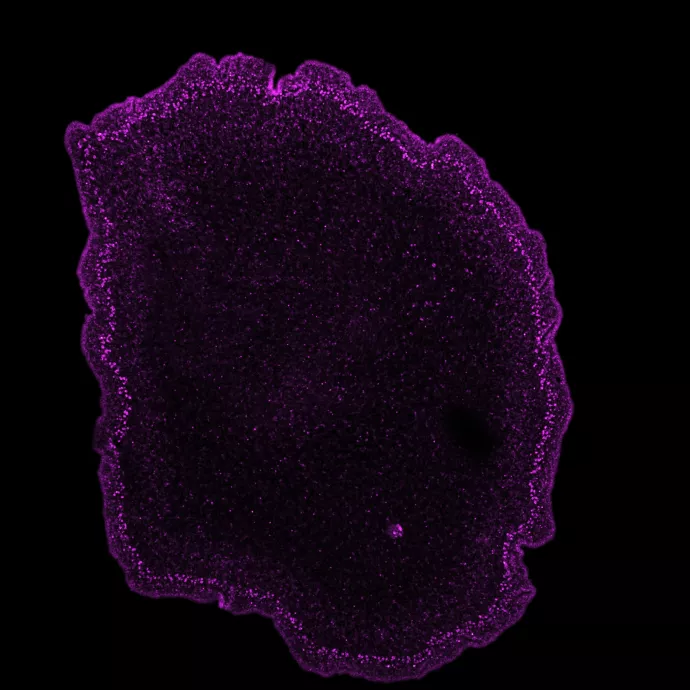
1st Author - Julia Gauberg, Phd Student, & Trichoplax
Please join us in congratulating Julia Gauberg (PhD student), from Senatore Lab, on her 1st first-authored paper:
Journal Of Biological Chemistry doi: 10.1074/jbc.RA120.015725 jbc.RA120.015725.
"For cells in the nervous system, called neurons, to communicate effectively, they rely on calcium signaling. Calcium signaling in neurons needs to be tightly controlled, and one type of channel that allows precise control of calcium entry into the cell is the voltage-gated calcium (CaV) channel. There are three types of CaV channels in animals, and one type, the CaV2 channel, has evolved to play a dominant role at the junction between two neurons. This junction, called a synapse, is a key structure that permits neurons to communicate with each other. Here, CaV2 channels play a crucial role in the release of vesicles and signaling molecules that makes this communication possible. 
In our study, we sought to understand the features of CaV2 channels that make them best suited for synaptic transmission and explore when these features evolved. To address these questions, we compared a human CaV2 channel to the CaV2 channel from Trichoplax adhaerens, a simple seawater animal that lacks neurons and synapses. Despite its lack of neurons, Trichoplax is capable of complex and directed movement towards light, food, and against gravity. We found that the Trichoplax CaV2 channel was present in “neuroendocrine-like” cells that are likely specialized to secrete signaling molecules for cell-cell communication. This suggests that, even though Trichoplax lacks neurons, the CaV2 channel may play a role in releasing signaling molecules, similar to the CaV2 channels at human synapses. We also discovered that many of the voltage-dependent properties of CaV2 channels (e.g. how they open and close in response to voltage) are similar between humans and Trichoplax. This suggests that the core features of CaV2 channels were established hundreds of millions of years ago during the early stages of animal evolution.
Neuronal CaV2 channels have the ability to interact with proteins that can alter their function, and this regulation is important for their roles at synapses. For example, G-proteins can bind to CaV2 channels and cause them to open slower and allow less calcium into the cell. G-proteins are important signaling molecules in neurons that can transmit information coming from outside of the cell. These proteins regulate CaV2 channels and synaptic transmission in response to incoming signals from other neurons. Knowing this, we decided to examine the effects of G-proteins on both channels. We discovered that, unlike the human CaV2 channel, the Trichoplax CaV2 channel was unaffected by G-proteins. However, Trichoplax G-protein homologues could inhibit the human CaV2 channel. This suggests that the ability of G-proteins to alter CaV2 channel properties evolved due to changes in the CaV2 channel structure, after the emergence of synapses and the nervous system. Altogether, our paper shows that CaV2 channel properties and potentially their function in synaptic transmission evolved early during animal evolution, but that key protein interactions that “fine tune” CaV2 channels properties may have emerged later, after the nervous system was established." Julia Gauberg, MSc, PhD Candidate, Senatore Lab
